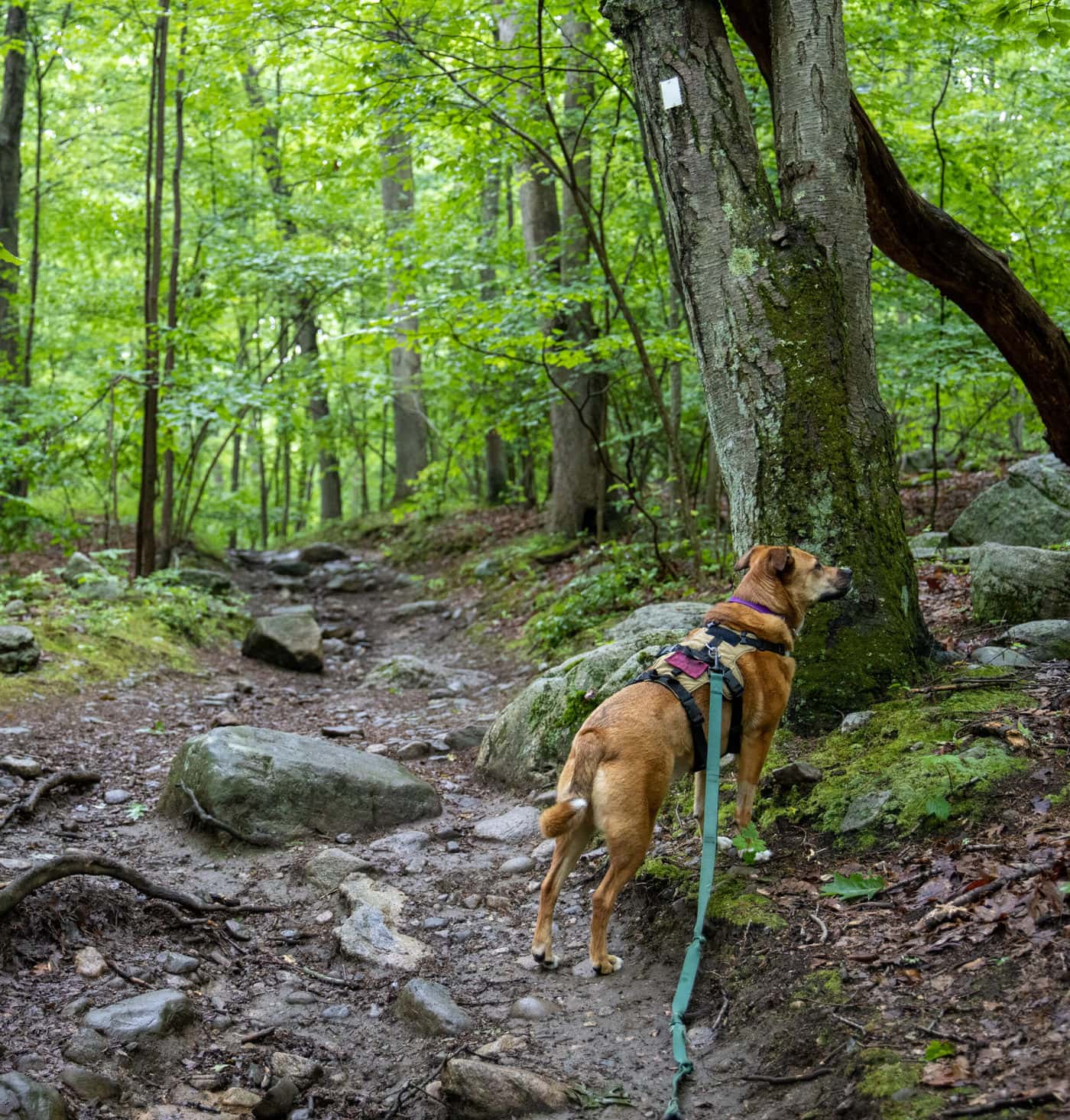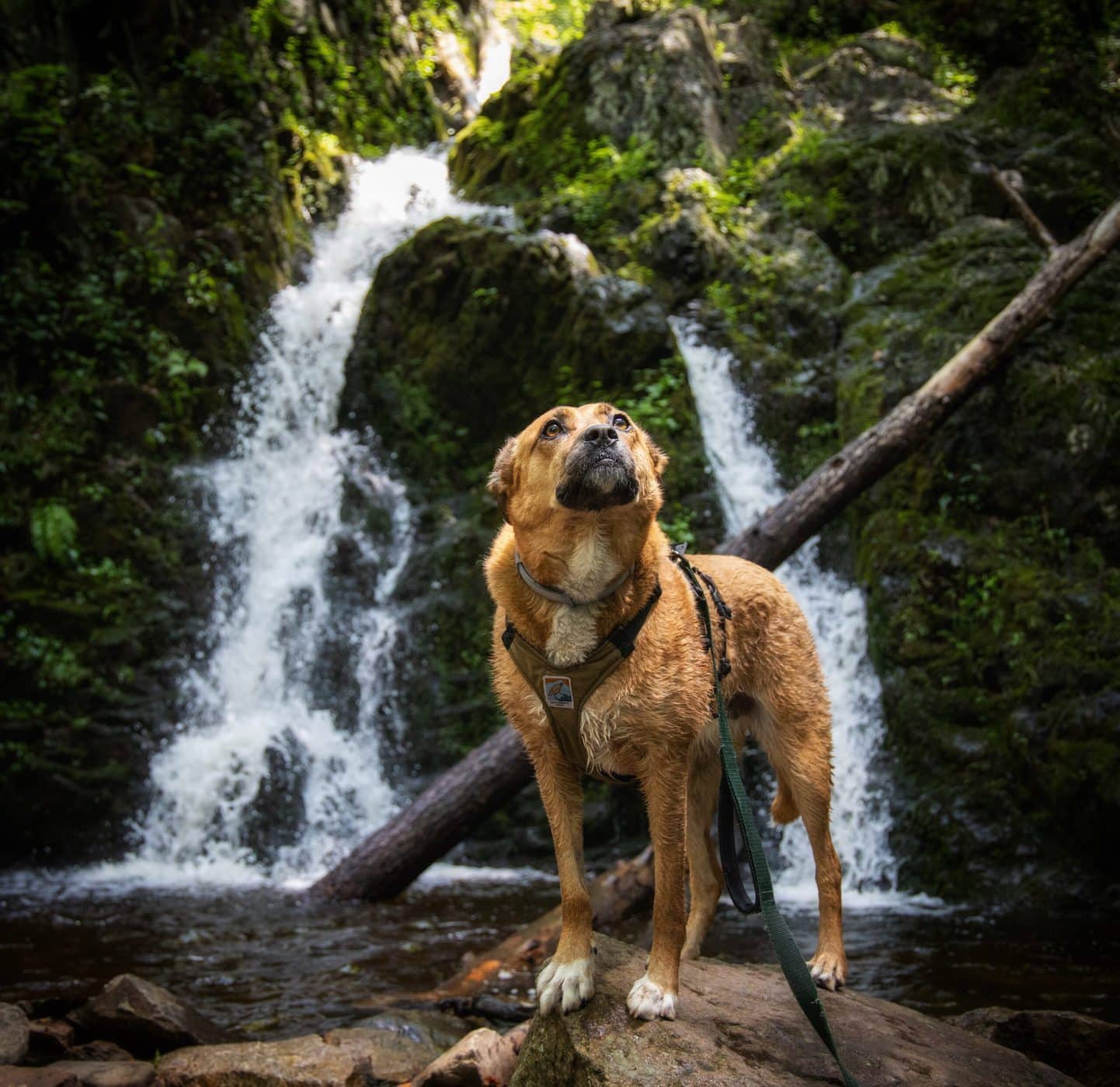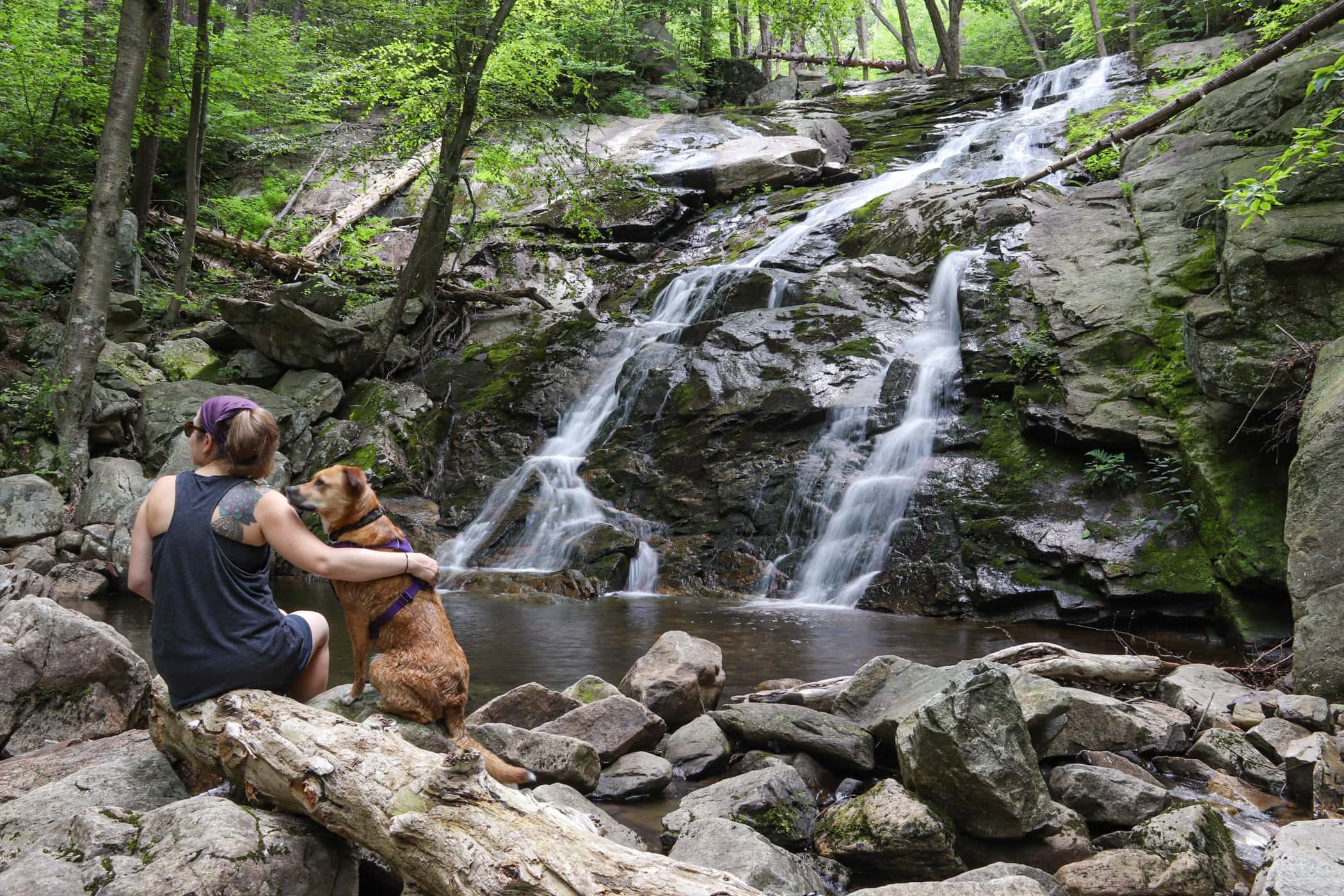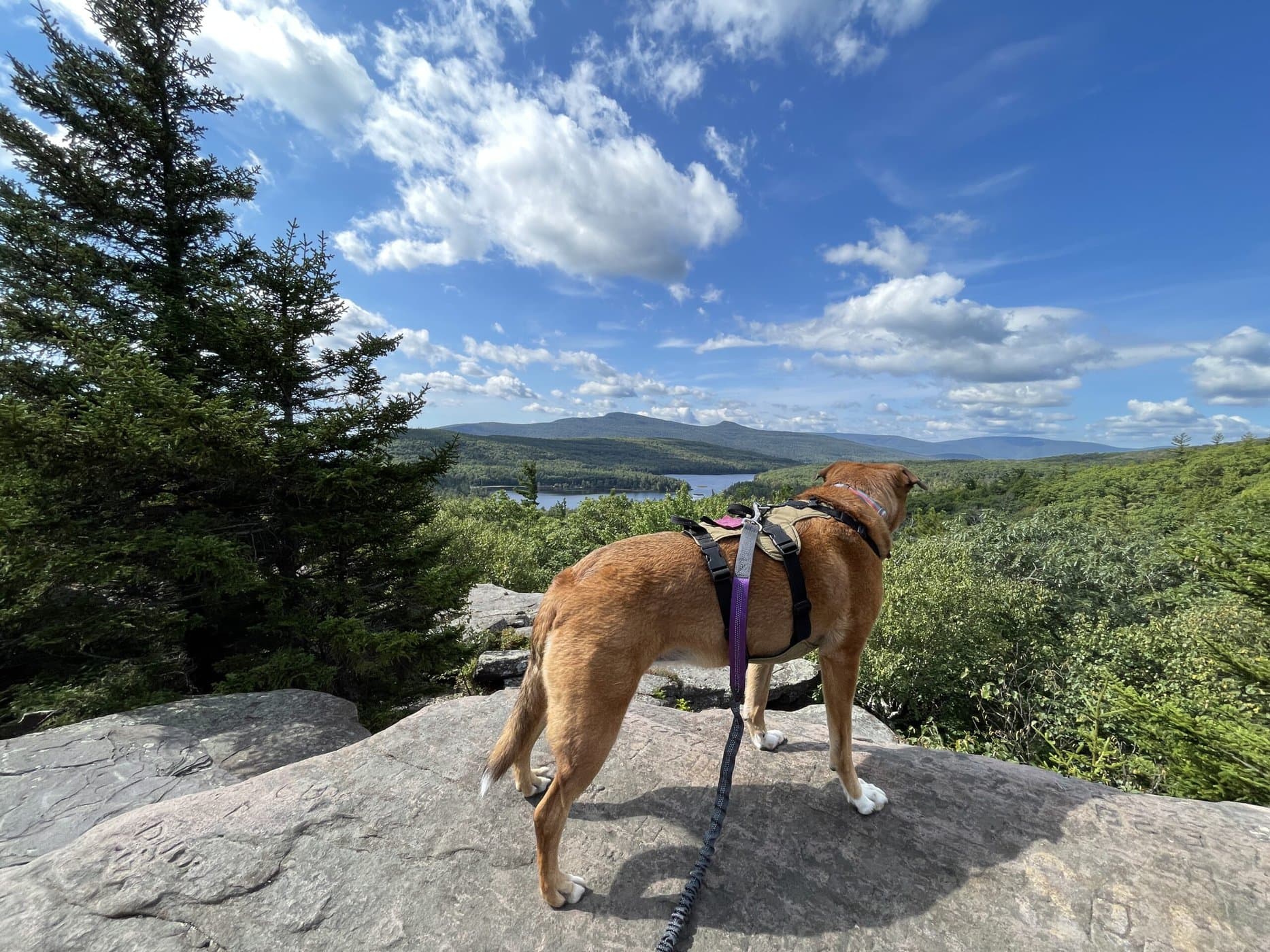The warm sunshine is here, and it’s time to hit those sizzling trails in the Hudson Valley — but how hot is too hot for your dog to come along?
I’ve been hiking with my rescue dog, Roxy, for seven years and I have learned a lot through our experiences on the trails. When we first started hiking, I was afraid she could get hurt through interactions with wildlife, such as a snake — but I soon learned that the biggest threat to her safety was my own lack of knowledge and preparedness.

We all love our pups and would be heartbroken if we caused any harm to them, but we are human and make mistakes. Here are a few things to consider to keep your dog safe during these hot dog days of summer.
Before you go, know your dog’s paws
Many dog owners make the mistake of hitting a peak when their dog’s paws aren’t ready. If you play with your pup in your backyard and don’t walk on hard surfaces, his or her paws may be too soft for long summer hikes.

The paw pads need to build up calluses and thicker skin for rougher terrain. I learned this lesson the hard way when I let my 6-month-old pup run on a tennis court on a hot day. Within 20 minutes, her paw pads were injured so badly the vet had to wrap them up for a week! I felt so terrible, but I was grateful that I learned that lesson before we hit the trails.
Rocky terrain can injure your dog’s paws on a cool day, but on a hot day it can happen even faster. Here are some paw safety tips:

- Start off with smaller hikes to build up your dog’s paws.
- Musher’s wax and/or dog booties can help protect paws from hot surfaces
- Bring a canine first aid kit, and make sure you have something or someone to assist carrying your dog if you need to.
- Dogs also have arteries in their paw pads, so remember that if they get cut, you may need something to stop the bleeding quickly.
Check the heat index — and your dog’s response
Can dogs sweat like humans to regulate their body temp? No, they rely on panting and releasing heat through their paw pads and nose. I’ve witnessed many dogs collapsing on a trail due to heatstroke, and their owners were devastated. Let’s talk about how humidity really turns up the heat for dogs.

The heat index is the temperature the body feels when heat and humidity are combined. An example is that when the temperature is 88 degrees and the humidity is 70%, a dog feels like it is 100 degrees. Heat stroke can be seen in all breeds of all ages, but more likely in long-haired and brachycephalic (short- nosed) breeds.
You know your dog best, but be sure to research their breeds’ threshold for heat. You can search for “Heat Index Caution For Dogs” to find a chart that shows how temps and humidity percentages add up and become dangerous.

Once heatstroke begins, it is very tough to turn it around, so please watch out for these signs of heatstroke:
- Excessive drooling & rapid breathing
- Labored or difficult breathing
- Bright red gums and tongue, which will turn to white or blue gums as they enter shock
- Lethargy/weakness
- Vomiting and/or diarrhea
If you think your dog has heatstroke, get to a veterinarian immediately. You can wet your dog with cool water on your way to the vet, but do not immerse him or her in ice-cold water. Prevention is truly key when it comes to beating heatstroke. There’ll always be another, cooler day to hit that trail.
Watch out for blue-green algae
Blue-green algae is toxic to humans and dogs, but even more deadly for dogs. It can form in lakes, rivers, and streams, generally during hot temperatures.
This algae forms into algae “blooms” on the surface of the water and can look blue-green in color. If a dog swims in water with this algae, he or she can die from the toxins within minutes to hours of exposure. Be sure to consider the water you let your dog swim in during the summer.

The NYS Department of Environmental Conservation has a map to show reports of Harmful Algal Blooms, but it is often not reported in less-traveled areas. Here is a link to the Pet Poison Helpline for more info about this harmful algae.
Pack a canine first aid kit
Do you carry a first aid kit for your dog? In addition to my human first aid kit, here are a few suggestions that I carry for my dog:
- Tick key and tweezers
- Mushers Wax
- Hydrogen Peroxide
- Benadryl
- Bandages for paws
- Styptic powder for bleeding nail injuries
- Some vet prescribed meds (confer with your vet first)
- A card with your dog’s info, vet info, appropriate doses for any meds, etc.
- An extra leash

“The Dog’s Way Podcast” has great episodes about dog training, and even one about your dog’s first aid kit. Check out this link for their dog first aid kit list.
And remember…
The easiest way to avoid many harmful threats to your dog on a trail is to keep him or her leashed. Bear in mind that dogs are welcome at all Scenic Hudson parks except Scenic Hudson Park at Irvington and Hudson Highlands Nature Museum. Dogs must be leashed at all times, with a six-foot maximum. Owners must clean up after their pets.


Soaking up Black Rock Mineral Springs. (Photo: Diana Richards) 
Seeing the Catskills from North-South Lake. (Photo: Diana Rchards) 
Finding another soaring view together at Wittenberg. (Photo: Diana Rchards) 
On leash at North-South Lake. (Photo: Diana Rchards)
Every dog is different, and many will follow you until they can’t physically move anymore, which may be too late. Pay close attention to your dog and how he or she is acting, and turn around if you are at all concerned about any off behavior. Know before you go, and please spread the word to any new hikers or new dog owners. Stay safe, and happy trails to all you human and pup friends.













